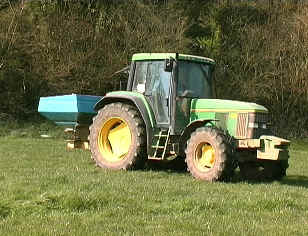
|
Timing is only one factor in the decision to
use fertiliser. The farmer also has to decide upon the chemical make-up of the fertiliser.
This will depend on local knowledge, as well as on soil analysis. The correct balance of
Nitrogen (N) Phosphate (P) and Potash (K) is just as important for growing grass as it is
for other crops. The fertiliser is sold in a variety of ratios of N, P and K. Slurry and
dung contain phosphate and potash. An allowance will be made if this has already been
applied. Fields which are used for silage require more potash than those used only for
grazing. |
